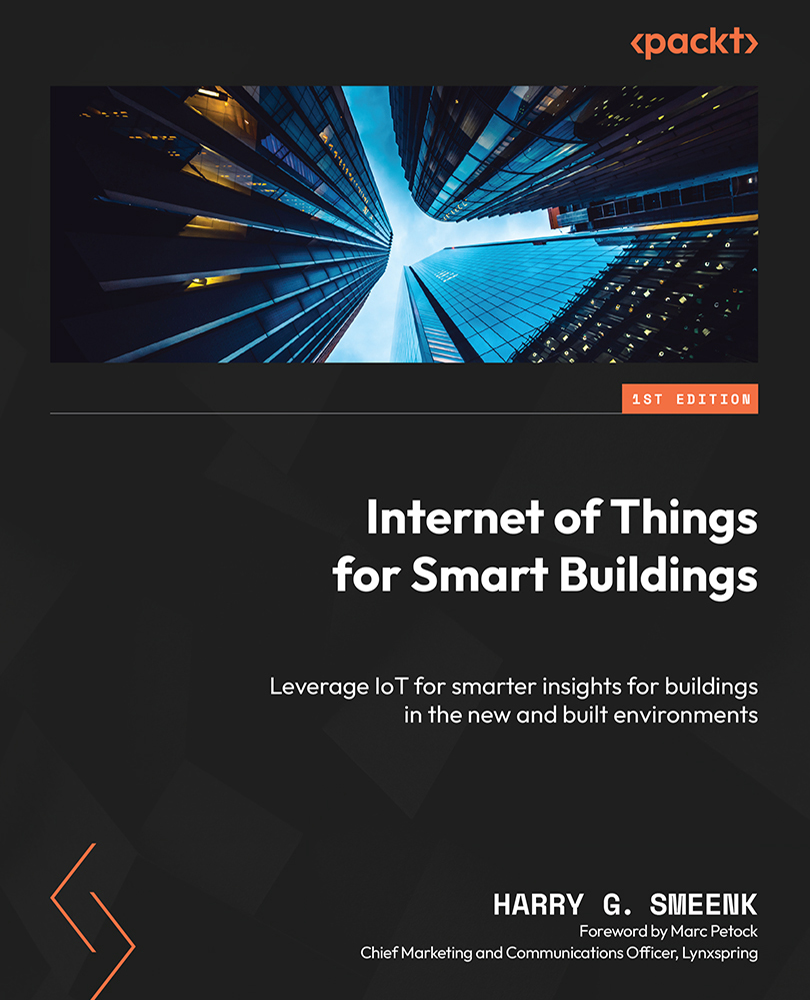IoT smart building safety systems
Many people may not realize that a lot of the security, cameras, and accessibility systems deployed in buildings today already use IoT technology. Continued development of newer solutions helps smart buildings not only expand their security and accessibility capabilities within their premises but also integrate directly with smart, city-wide security programs.
Security and cameras
Earlier in this chapter, we covered building access control systems and visitor registration systems, two highly important parts of an overall building security system. Other security systems components can include security cameras and video surveillance inside and outside of a building. Sensors and door alarm systems can activate loud noises to deter criminal activity while it's in progress. Buildings need to have emergency and fire systems to meet code requirements. Commercial cybersecurity systems protect buildings’ networks and typically include antivirus...


























































